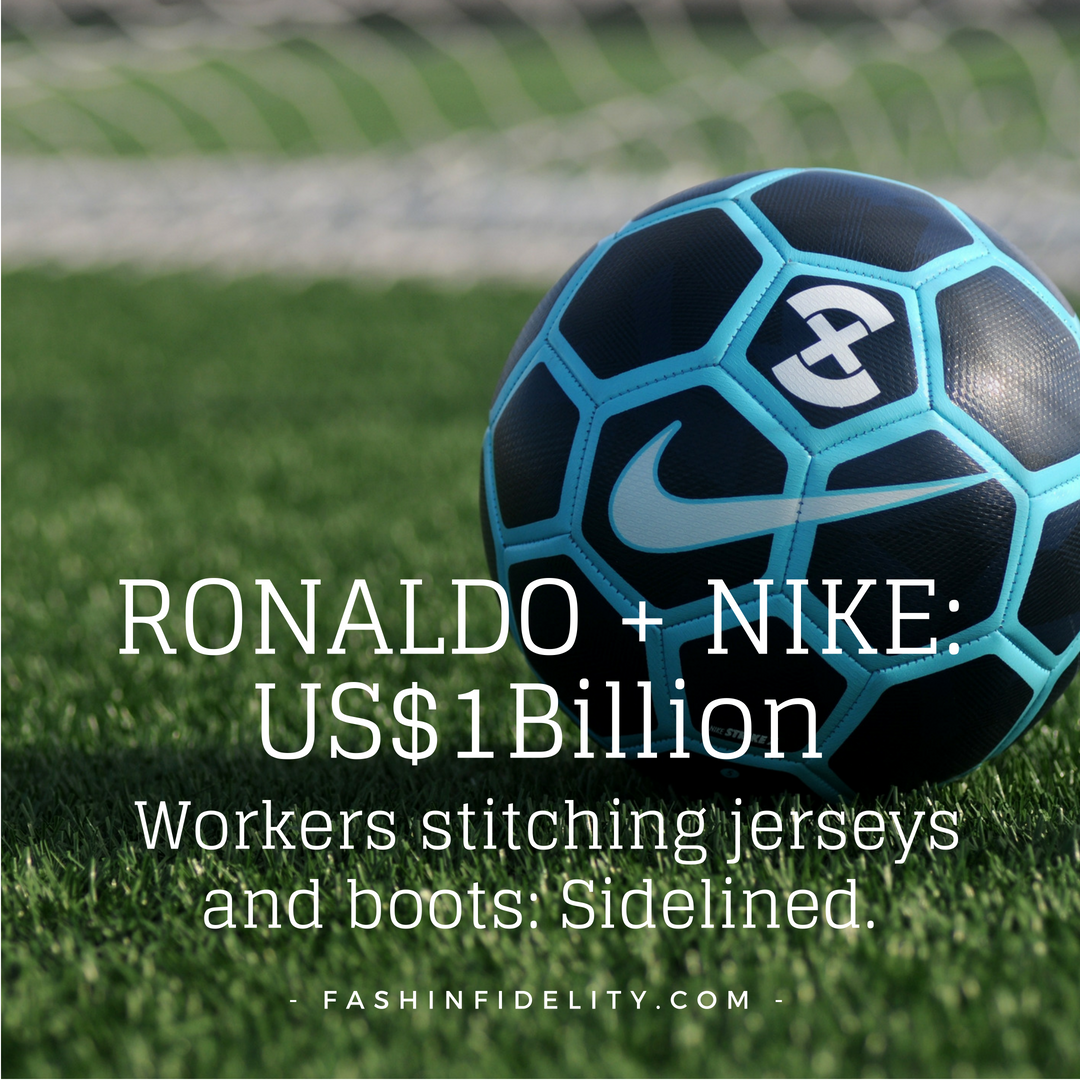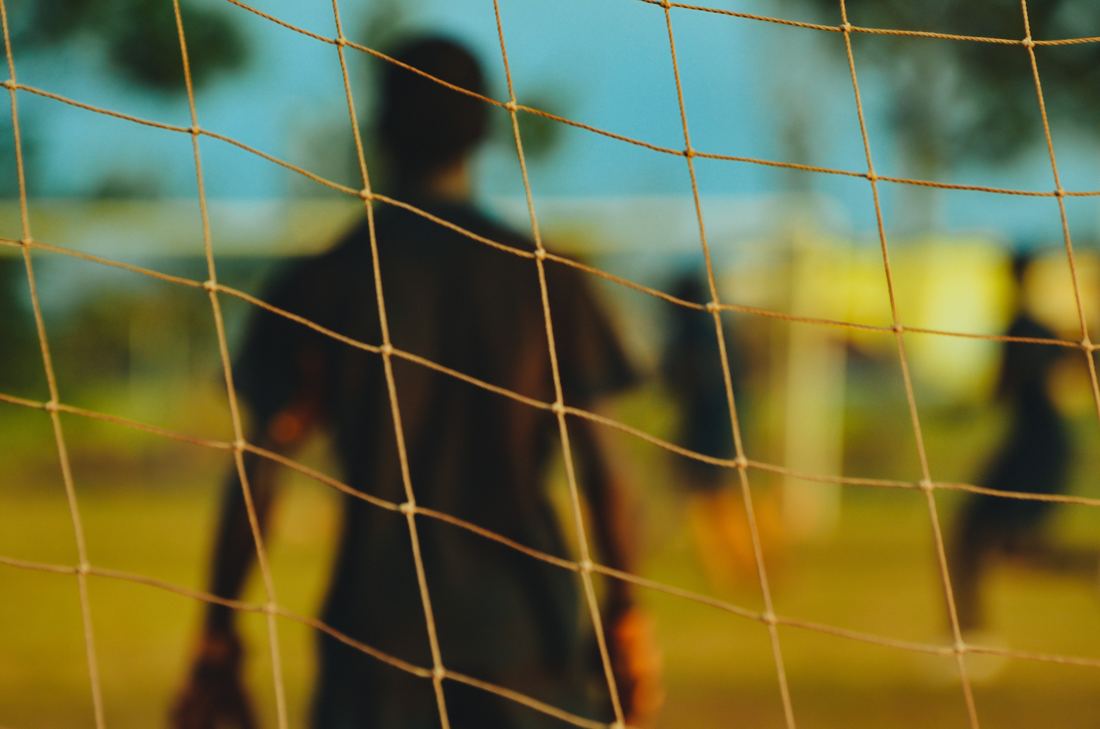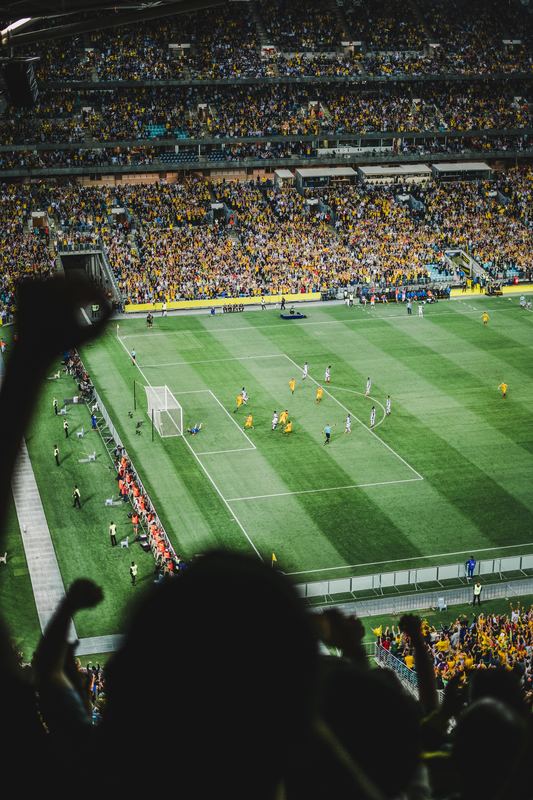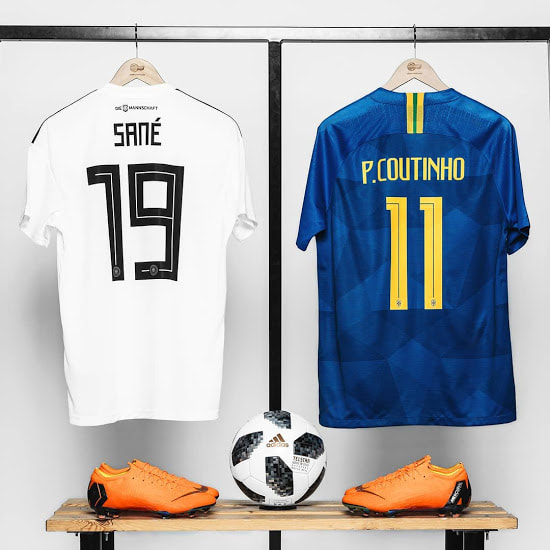|
FOUL PLAY IN GARMENT FACTORIES: You think Nike doesn’t exploit workers anymore? Think again. Germany may be repeat World Cup champions in football history, but shunning responsibility for your supply chain (again) can’t be a record you can be proud of. 1298 words; 6.5 min read. Remember the controversy Nike was embroiled in in 1992? For those of us lucky enough to have grown up adoring Radiohead or banging our heads to Alanis Morrisette’s Ironic, we were also lucky to have been introduced to the term ‘sweatshops’, and in this case, there literally were dozens of them, in Indonesia, filled with human labour, mostly women, but also children, working under terrible conditions – making, moulding, and sewing your Nike runners into place. The thing is, since that time, bar increasing monitoring and auditing their factories, and notwithstanding efforts to clean up their image by publishing a detailed report of labour conditions in Nike factories (including publishing them), the problem never went away. It’s still there, but it comes in different variations, according to a recent report authored by Clean Clothes Campaign (CCC) and Éthique sur l’étiquette. In matters of labour violations, responsible companies need to keep looking out for them in any situation or country at risk, be nimble enough to adjust their payment and employment model, and become part of the solution to ensure fair and equitable sharing of prosperity. Sounds like companies have been light-footed enough: apparently, Nike and Adidas have slowly moved most of their sourcing to Indonesia, Cambodia and Vietnam over the years (not just shoes, but clothing too), where wages are lower and labour abuses are rife. The 2018 report by CCC and Éthique sur l’étiquette, a follow up report of the same content from two years ago, highlights that although Nike and Adidas are spending more money than ever on sponsorships and marketing, working conditions for the individuals that make their products remain shaky. For example, comparing the current production costs of Nike and Adidas sports shoes with those from 25 years ago, when the initial sweatshop scandal broke, the worker’s share of the price of each pair shoes sold has dropped by 30 percent. "These businesses are quick to increase profits by shifting their manufacturing to lower-cost countries, but won’t share in any of that wealth with their workers". Shifting to lower production hubs has been a trend for many sportswear companies at the back of continued increases in labour costs in China. However, these countries are reporting an increase in human rights violations and garment workers’ average salaries are between 45 percent and 65 percent below the living wage, leaving workers with largely insufficient funds to provide for their families’ basic needs, thereby trapping them in extreme poverty. For example, in Indonesia, where 80 percent of garment workers are women, most workers earn between 82 euros and 200 euros a month. This does not even cover the basic needs to live a decent life according to calculations from the Asia Floor Wage, who estimates a living wage to amount to 363 euros (570 AUS dollars, or 1,863 Malaysian ringgits.) Due to this, the Clean Clothes Campaign has challenged sportswear and fitness labels like Nike and Adidas to ensure workers in their Asian supplier factories are paid a fair wage as their share of the production cost dwindles. Both Nike and Adidas are collectively kitting out 22 of the 32 teams going against each other at the 2018 Russian World Cup, which started last week. The not-for-profit organisations are also calling on Nike and Adidas, and all sportswear brands, to create a time-bound roadmap with targets to guarantee the payment of a living wage earned in a standard working week, adopt more responsible purchasing practices to enable the payment of living wages and publish the actual monthly wages of the workers in its supplier factories, as well as the results of their social audits. In summary, they are urging Nike and Adidas to make good on their promises made to unions and civil society, as well as to the Indonesian government, made in 2011, to address job security and living wages. Both Nike and Adidas have succeeded in yielding impressive growth for their shareholders over the past decade. These businesses are quick to increase profits by shifting their manufacturing to lower-cost countries, but won’t share in any of that wealth with their workers. Sounds like the term ‘slave labour’ just got redefined over time, but never really died. "[Nike and Adidas] are, technically speaking, within a game’s reach to change the world for good. And what better way to do this than in the spirit of the multicultural camaraderie of the most celebrated international sport in the world?" Anyone reckons some of the star football players are overpaid and overpriced? Well, you’re not wrong there, because even though both Nike and Adidas generate sufficient revenue to be able to pay living wages to all of their workers that stitch and sew, they chose to spend their money on football sponsorships instead. Over the past few decades, Nike and Adidas budgets for marketing and sponsorships have doubled in value. In a record-breaking new contract, the German football team is set to receive 65 million euros (75 million USD; 102 million AUD) per year from Adidas until the next World Cup, which is three times as much they previously received under the previous contract which expires this year. The French national football team negotiated a deal for a 50.5 million euro sponsorship with sports giant Nike. Millions will cheer football players over the next few weeks, but the workers who make their team jerseys and football boots have been left on the sidelines. And who can forget the lifetime sponsorship deal struck by Nike and Ronaldo, back in 2016? It's worth almost 1 billion USD. And that's only sportswear sponsorship, which doesn't include his other endorsements and earnings from football! On average, your Indonesian garment worker earns 210 USD (844 Malaysian ringgits) per month. Ronaldo: a staggering 7.75 million USD (31 million Malaysian ringgits – based on his earnings of 93 million USD in 2017.) The next time you’re feeling excited about your favourite football team or player, perhaps be a little adventurous and highlight this unresolved issue with them. Write to the football team or footballer that you support (snail mail, Instagram, Twitter, Facebook), and ask them to raise this issue with Nike or Adidas, or whichever company is sponsoring them. They are, technically speaking, within a game’s reach to change the world for good. And what better way to do this than in the spirit of the multicultural camaraderie of the most celebrated international sport in the world? Personally, I’d love for our local clubs (district/university) to step up to the challenge. You don’t have to stop at celebrities, though. Have a chat with your coach at school about who makes your sportswear, and find a way to talk about it with your friends while enjoying some of the World Cup matches. Who knows, you could be a force of change for good, too. All the best to the teams competing! Clean Clothes Campaign brings together trade unions and NGOs covering a broad spectrum of perspectives and interests, such as women’s rights, consumer advocacy and poverty reduction. Read the report, Foul Play, here. Join us in our Slow Fashion movement with the hashtag #ConscientiousFashionista and #wardrobetruths on Instagram, and follow us at @fashinfidelity. Tags: #soccer #football #worldcup2018 #worldcup #russiaworldcup #nike #adidas #garmentworkers #foulplay #cleanclothescampaign #fairwages #conscientiousfashionista #fastfashion #slowfashion #ethicalfashion #ecofashion #sustainablefashion #greenfashion #sustainability #wardrobetruths #fashioneducation #fashionisnolongertrendy #fashion #saynotofastfashion #kualalumpur #australia #malaysia #russia Further reading:
1 Comment
|
Details
�
#FashionEducationAdding substance to the Conscious Fashion chatter. Archives
April 2024
Categories
All
Resources
Read more.. |
||||||||||||
Acknowledgement of Country
FASHINFIDELITY acknowledges First Australian peoples as the Traditional Custodians of this country (known as Australia) and their continued connection to land, sea, and culture. FASHINFIDELITY pays their respects to the resilience and strength of Ancestors and Elders past, present, and emerging and extends that respect to all First Australian peoples. FASHINFIDELITY is brought to you from the traditional lands of the Wurundjeri Woi Wurrung and Bunurong peoples of the Kulin Nation.
FASHINFIDELITY acknowledges First Australian peoples as the Traditional Custodians of this country (known as Australia) and their continued connection to land, sea, and culture. FASHINFIDELITY pays their respects to the resilience and strength of Ancestors and Elders past, present, and emerging and extends that respect to all First Australian peoples. FASHINFIDELITY is brought to you from the traditional lands of the Wurundjeri Woi Wurrung and Bunurong peoples of the Kulin Nation.




